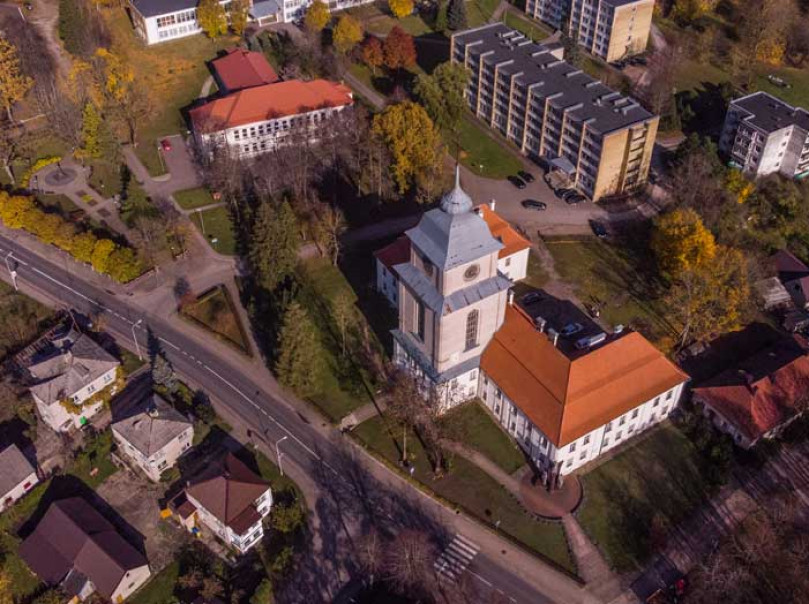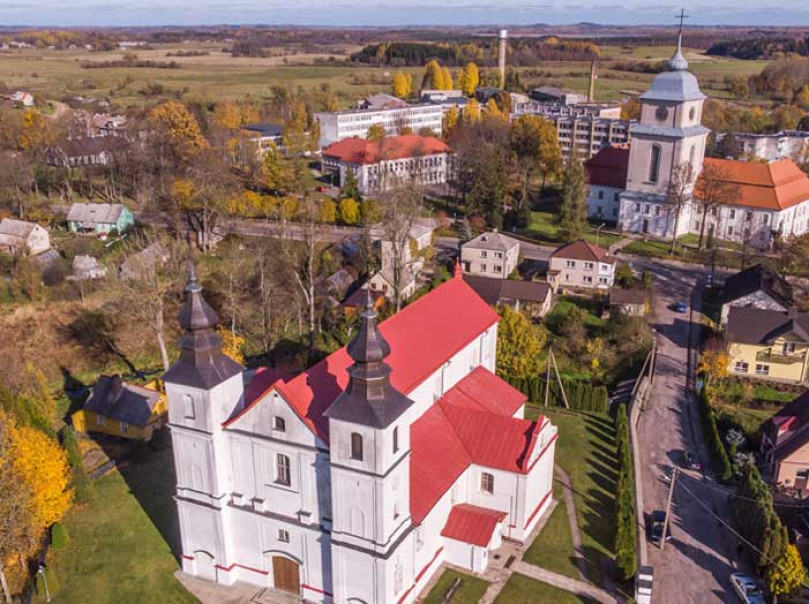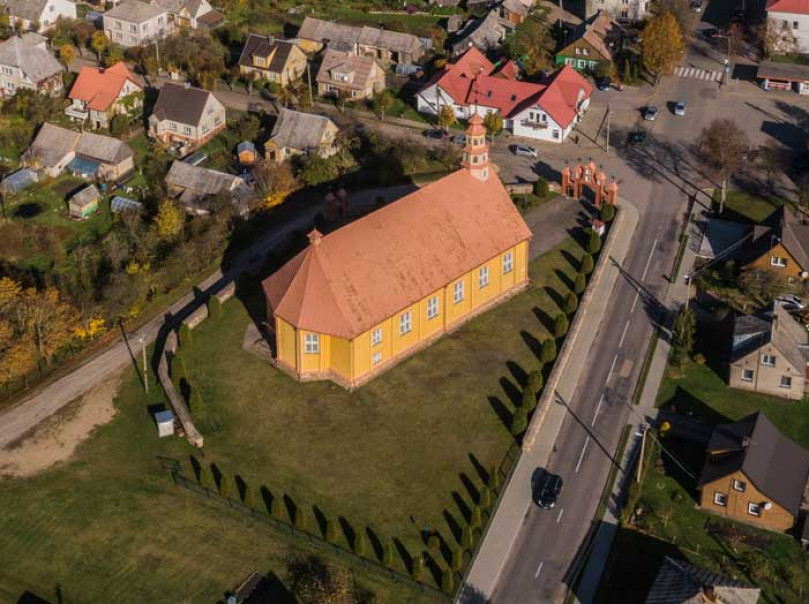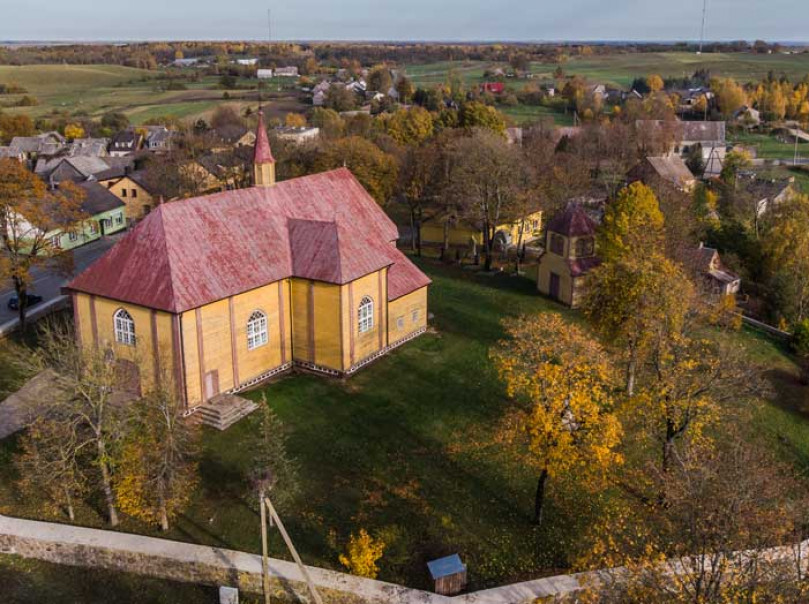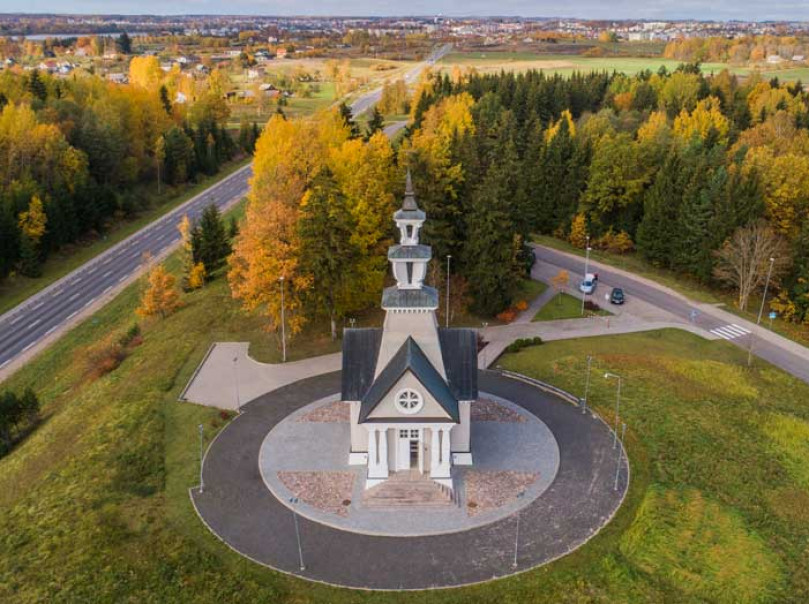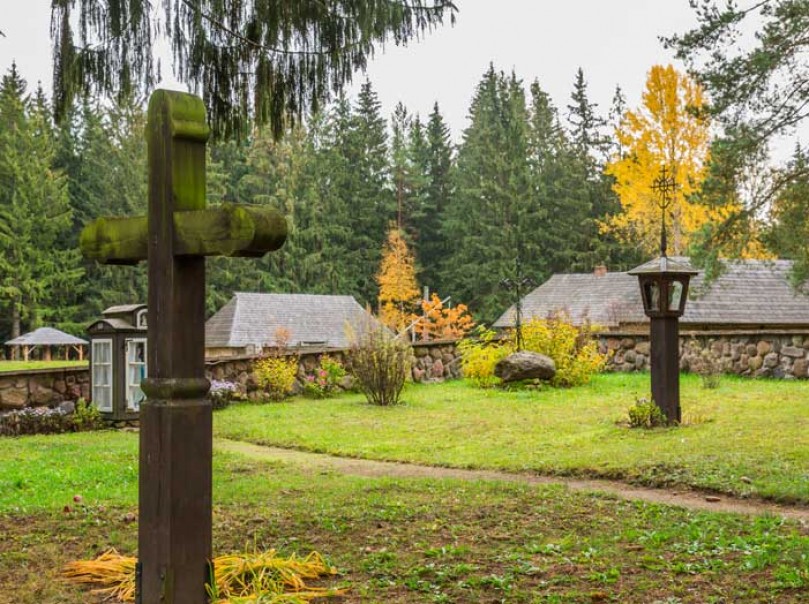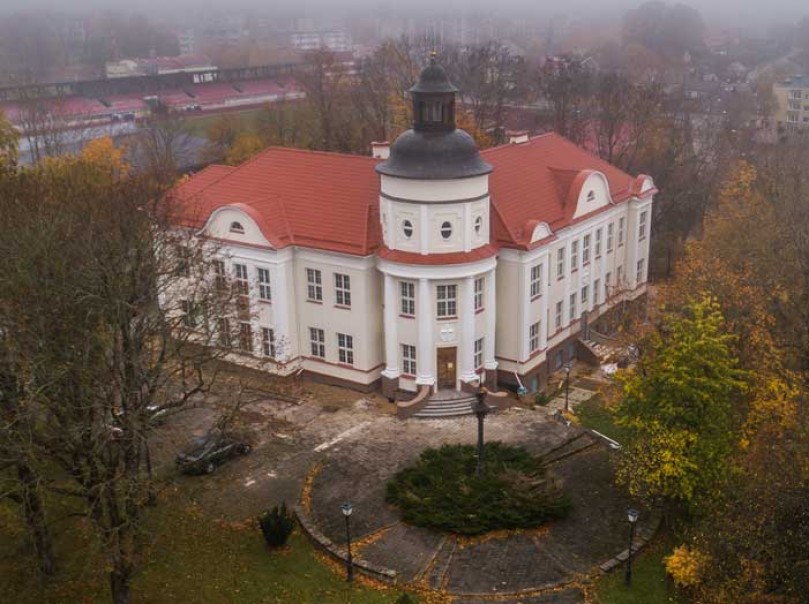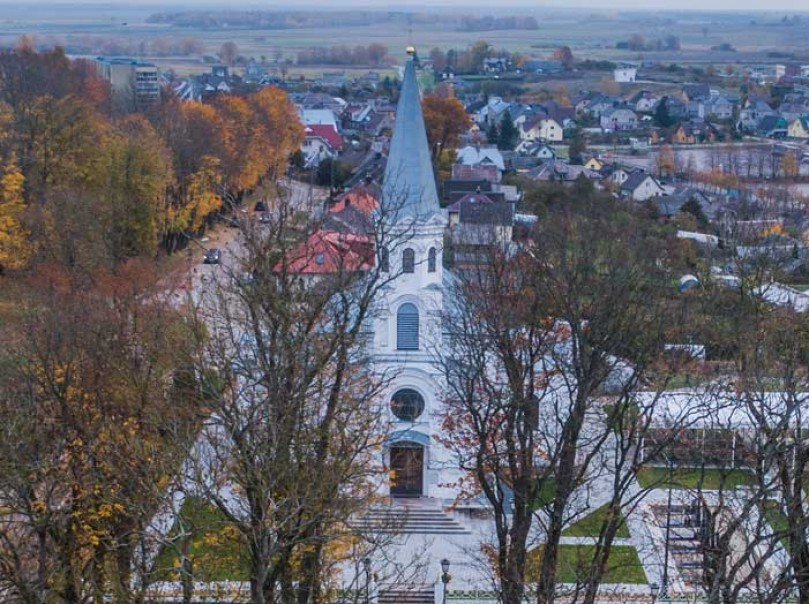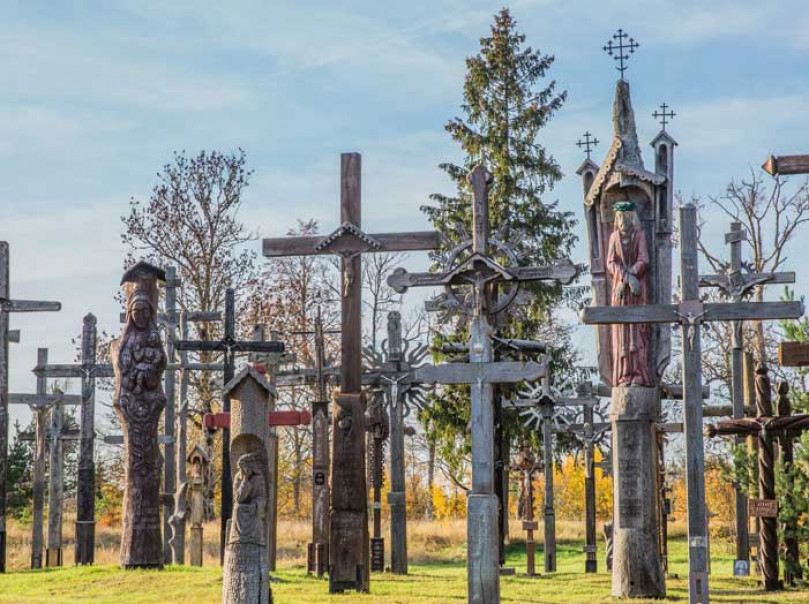Routes
Telšių-Varnių lankytinų objektų maršrutas
Description
-
Samogitian diocese museum in Varniai and Bp. M. Valančius garden
In the first years of Christianity in Lithuania there were no special educational institutions for priests, and the pastoral work was often done by foreigners, mostly Polish. Medininkai diocese wanted to overcome the shortage of priests and in 1469 established a school by the cathedral for future priests of the diocese.
-
Varniai St. Peter’s and St. Paul’s church building complex and Lourdes in the churchyard (built in 1914, one of the oldest in Lithuania)
St. Peter’s and St. Paul’s church In Varniai city, which can be found on the river of Varnelė shore, has been given the status of cultural heritage object, however the first Varniai Cathedral has not survived to present day. The holy building’s foundations, which were laid in 1421, were not found during later archaeological searches.
-
St. Alexander’s church in Varniai
In the year when Medininkai diocese, which eventually became Samogitian diocese, was established in Varniai, there was already a parish church. In the same spot, where today stands the new building of St. Alexander’s church, previously stood another church, built by the care of Vytautas Magnus and consecrated in 1417 St. Alexander’s church, according to the Christian name of Vytautas Magnus.
-
Luokė All Saints church building complex
The town of Luokė is mentioned in the historical sources when the Christianisation of Samogitians began, in the order of Samogitian Christianisation and Grand Duke Vytautas Magnus to build eight churches, one of which was built in Luokė. Even though in the six centuries the church was many times repaired and rebuilt, it preserves its folk architectural forms to this day.
-
Rainiai Massacre place and chapel complex
The so called Rainiai Massacre took place on the night from 24th to 25th June 1941 executed by Soviet troops in which 76 political prisoners from Telšiai prison were killed. The soldiers transported the prisoners from the prison in the dead of night, brutally tortured and executed them without any charges.
-
Mojava hymns, May devotions to the Blessed Virgin Mary (Museum of the Samogitian village)
May devotions to the Blessed Virgin Mary are also called Mojava. They are sung not only in churches, but also in the homes of the faithful, - villagers and townspeople sing together after their day’s labours.
-
Telšiai Bernardine monastery and seminary building complex
Telšiai Bernardine monastery and seminary sacred building complex – is one of the most important in Samogitia. It stands on the northern shore of lake Mastis, upon the hill of Insula. The buildings rose for the first time in the 17th century, the complex comprises the Bernardine monastery and church (which in 1926 became a cathedral), the seminary, the Episcopal palace, school and other buildings.
-
Telšiai Church of the Assumption of the Blessed Virgin Mary into Heaven
Telšiai parish was established in 1536. The same year by the order of the Grand Duke Sigismund the Old of the Grand Duchy of Lithuania Telšiai Church of the Assumption of the Blessed Virgin Mary into Heaven was built. In 1612, a parish school was established at the church. The church was rebuilt and reconstructed a few times, but the only authentic element that remains to this day is the bell that was churned in 1619.
-
Kęstaičiai Martyr Place
On 22nd November 1883, an armed conflict took place in the Kęstaičiai church, which cost many lives. By the order of the Czar of Russia it was decided to close the church, however the local religious community was fiercely resisting the closure.












